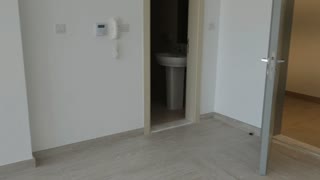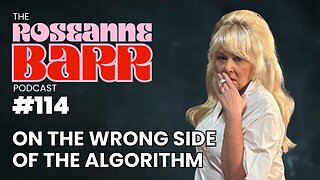Premium Only Content

Wonderful landscape
Geometric roadway design can be broken into three main parts: alignment, profile, and cross-section. Combined, they provide a three-dimensional layout for a roadway.
The profile of a road consists of road slopes, called grades, connected by parabolic vertical curves. Vertical curves are used to provide a gradual change from one road slope to another, so that vehicles may smoothly navigate grade changes as they travel.
Sag vertical curves are those that have a tangent slope at the end of the curve that is higher than that of the beginning of the curve. When driving on a road, a sag curve would appear as a valley, with the vehicle first going downhill before reaching the bottom of the curve and continuing uphill or level.
Crest vertical curves are those that have a tangent slope at the end of the curve that is lower than that of the beginning of the curve. When driving on a crest curve, the road appears as a hill, with the vehicle first going uphill before reaching the top of the curve and continuing downhill.
The alignment is the route of the road, defined as a series of horizontal tangents and curves.
The profile is the vertical aspect of the road, including crest and sag curves, and the straight grade lines connecting them.
The cross section shows the position and number of vehicle and bicycle lanes and sidewalks, along with their cross slope or banking. Cross sections also show drainage features, pavement structure and other items outside the category of geometric design.
-
 1:07
1:07
Every Where 2021
4 years agoWalk-in Grenland Residence Apartments
1443 -
 0:14
0:14
Castilho
4 years agocountryside landscape
4733 -
 0:32
0:32
Beautiful Animals
4 years agoWonderful cat playing
321 -
 1:30:44
1:30:44
Roseanne Barr
6 hours agoOn the Wrong Side of the Algorithm | The Roseanne Barr Podcast #114
90.9K41 -
 13:53
13:53
TundraTactical
4 hours ago $0.58 earnedFudd Finder : 11 Questions Second Amendment Questions (And Roasts) to Ask Your Friends
22.3K -
 LIVE
LIVE
Wayne Allyn Root | WAR Zone
6 hours agoWAR Zone LIVE | 5 SEPTEMBER 2025
119 watching -
 1:39:50
1:39:50
The White House
6 hours agoPresident Trump Makes Announcements, Sep. 5, 2025
39K26 -
 2:28:08
2:28:08
Red Pill News
4 hours agoBombshell Biden Docs Invalidate Autopen Pardons on Red Pill News Live
42.4K20 -
 9:36
9:36
Silver Dragons
3 hours agoGold Price NEW ALL TIME HIGH - $5,000 GOLD NEXT?
12.5K6 -
 LIVE
LIVE
LFA TV
12 hours agoLFA TV ALL DAY STREAM - FRIDAY 9/5/25
723 watching